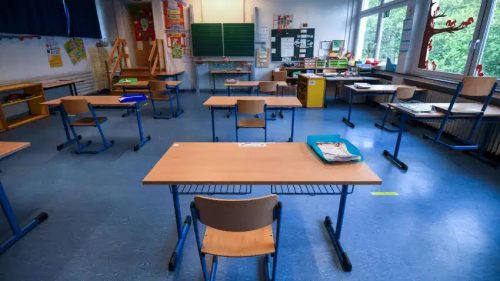

By Citlalli Florez
NEW YORK CITY, NY – There is now data to suggest the Covid pandemic caused progress in math and reading to be set back by two decades, and also widened the achievement gap based on wealth, according to a New York Times Editorial Board, which added these losses will remain unaddressed when federal money runs out in 2024.
Economists predict the significant impact on American education will diminish lifetime income for the newer generations and negatively impact the economy—educational administrators, and elected officials need to do more to mitigate such effects, the Times Board said.
“As a first step, elected officials at every level—federal, state and local—will need to devote substantial resources to replace the federal aid that is set to expire and must begin making up lost ground. This is a bipartisan issue, and parents, teachers and leaders in education have a role to play as well, in making sure that addressing learning loss and other persistent challenges facing children receives urgent attention,” the NY Times Board wrote this past week.
The editorial board added students grew accustomed to missing school and allegedly continued after the in-person classes resumed, but millions of youth have become chronically absent, which may translate to gaps in learning.
And these students are at a higher risk of never mastering necessary comprehension skills in earlier grade levels, could miss out on socialization, which teaches how to live and work with others, and are also more likely to drop out because of a possible academic lag, the NY Times Editorial Board noted.
Recently, the Associated Press used data compiled by Stanford Education Professor Thomas Dee to portray how school attendance has become an issue in the United States since the pandemic. More than a quarter of students were deemed chronically absent during the 2022-2023 school year, an increase from 15 percent pre-pandemic. This means that 6.5 million more children became chronically absent.
The issue regarding chronic absences is more pronounced in poorer districts, said the Times, noting chronic absenteeism was more than 61 percent in Oakland, CA.
But, despite this, absenteeism is also still present among wealthy schools as well. For example, The Chicago Tribune reported New Trier’s rate of chronic absenteeism got worse by class, affecting nearly 38 percent of its seniors.
On Friday, The Times reported data from the 2022-23 academic school year showing a slight improvement in attendance. However, it was also reported that in some states, such as California and New Mexico, “the rate of chronic absenteeism was still double what it was before the pandemic.”
Based on the evidence, punitive measures will not work, so educators need to harness a combination of incentives and actions to address economic and family issues that may contribute to frequent absences.
Researchers know that American students may grow more alienated from school the longer they attend. Students may reach a point in which they no longer care. This stems from a feeling that no one cares about them at school and that what they study will not be helpful in the real world.
These students are more vulnerable to mental health difficulties that may have worsened during the COVID-19 pandemic, said the Times, quoting data collected in 2021 by the Centers for Disease Control and Prevention, that reported this year 40 percent of high school students had feelings of sadness and hopelessness, 22 percent considered suicide and 10 percent reportedly attempted suicide.
According to the New York Times Editorial Board, “many parents and educators have been raising the alarm about the effects of grief, isolation and other disruptions on the mental health of their children. In addition to reconnecting these young people to school, states and localities need to create a more supportive school environment and provide counseling services these students need to succeed.”
The state of Virginia announced a statewide tutoring program to mitigate learning loss, reported the Times Editorial Board, but noted high-impact tutoring is labor-intensive and requires high-quality instruction.
The board added that is likely to succeed when sessions are held thrice weekly during school hours. Tutors must be well-trained and managed, working with four or fewer students simultaneously. Therefore, a tutoring program would require massive recruitment efforts when schools struggle to find teachers.
Other introduced measures are increasing students’ time in school through after-school and summer school programs; such a measure would be required for students who have fallen the furthest behind. However, in some communities, children have fallen behind by more than a year and a half in math.
Researchers Tom Kane and Sean Reardon recently argued, “It is magical thinking to expect they will make this happen without a major increase in instructional time.”
The Center for Research on Education Outcomes at Stanford University released a study with data collected from 16 states.
One way would be to expose students to teachers with a record of having an “extraordinary” impact on their students. These teachers would need extra compensation for taking in more students in their classrooms. But, finding such teachers can be difficult.




